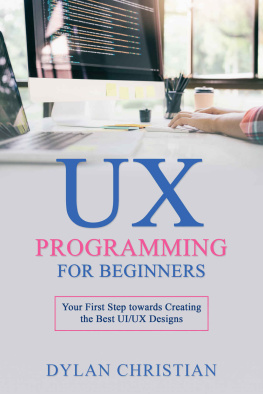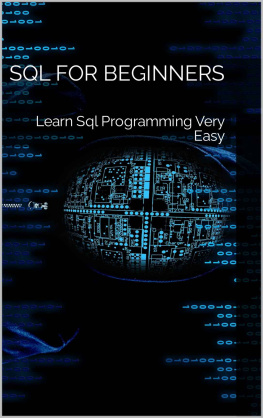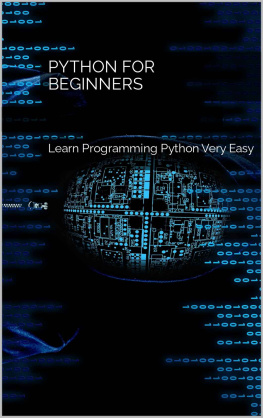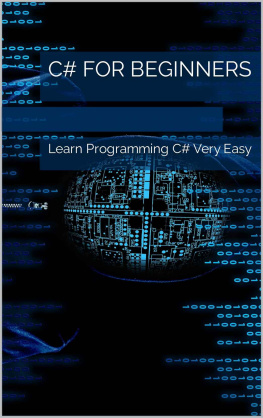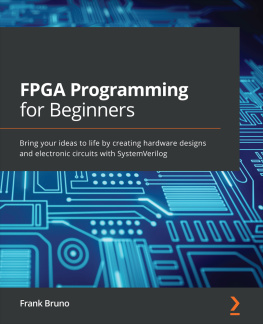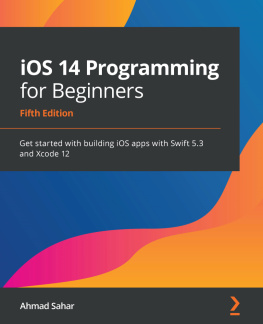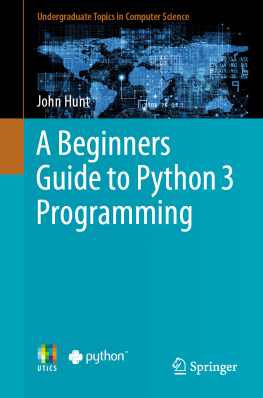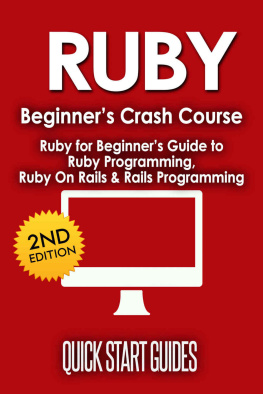LR - php in 1 day: php programming for Beginners
Here you can read online LR - php in 1 day: php programming for Beginners full text of the book (entire story) in english for free. Download pdf and epub, get meaning, cover and reviews about this ebook. year: 2020, publisher: UNKNOWN, genre: Home and family. Description of the work, (preface) as well as reviews are available. Best literature library LitArk.com created for fans of good reading and offers a wide selection of genres:
Romance novel
Science fiction
Adventure
Detective
Science
History
Home and family
Prose
Art
Politics
Computer
Non-fiction
Religion
Business
Children
Humor
Choose a favorite category and find really read worthwhile books. Enjoy immersion in the world of imagination, feel the emotions of the characters or learn something new for yourself, make an fascinating discovery.

- Book:php in 1 day: php programming for Beginners
- Author:
- Publisher:UNKNOWN
- Genre:
- Year:2020
- Rating:4 / 5
- Favourites:Add to favourites
- Your mark:
- 80
- 1
- 2
- 3
- 4
- 5
php in 1 day: php programming for Beginners: summary, description and annotation
We offer to read an annotation, description, summary or preface (depends on what the author of the book "php in 1 day: php programming for Beginners" wrote himself). If you haven't found the necessary information about the book — write in the comments, we will try to find it.
LR: author's other books
Who wrote php in 1 day: php programming for Beginners? Find out the surname, the name of the author of the book and a list of all author's works by series.
php in 1 day: php programming for Beginners — read online for free the complete book (whole text) full work
Below is the text of the book, divided by pages. System saving the place of the last page read, allows you to conveniently read the book "php in 1 day: php programming for Beginners" online for free, without having to search again every time where you left off. Put a bookmark, and you can go to the page where you finished reading at any time.
Font size:
Interval:
Bookmark:
 Ayoub LR
Ayoub LR1.1 What is PHP?
Chapter 2: Installing XAMPP
2.1 Configuring php.ini
2. Important Links
3. Coding our first Web Page
Chapter 3: Basic PHP Tasks
1. Displaying Outputs
1. echo
2. print
3. Escaping Characters
2. Duplicating Code
1. include
2. require
3. include_once, require_once
3. Redirecting Users
Chapter 4: Constants, Variables, Data Types and Operators in PHP
4.1 Constants
3. Basic Data Types in PHP
4.4 Type Casting
1. The Assignment Operator
2. Arithmetic operators
3. Combined Assignment Operators 4.5.4 Increment/Decrement operators
1. Strings
1. Commonly used String Functions in PHP 5.2 Using Strings to Represent Dates
2. The strtotime() function
3. The date() function
5.2.3 Setting the timezone
3. Arrays
1. Creating an Array
2. Displaying the Content of Arrays
5.3.3 Adding Elements to Arrays
1. Comparison operators
2. Logical Operators
3. Control Structures
1. If Statement
2. Ternary Operator
3. Switch Statement
4. For Loop
5. Foreach Loop
6. While Loop
7. Do-while Loop
4.Other Topics in Flow Control
6.4.1 Booleans
3.Alternative Syntax 6.4.4
Displaying HTML code
7.1 Defining our own Functions
7.2 Type Declaration
Chapter 8: PHP Superglobals
8.1 PHP Form Handling
2.get and $_GET 8.1.3
post and $_POST
8.1.4 Keeping The Values in The Form
8.1.5 Filtering User Input
8.1.6 Cross-Site Scripting
2. $_SESSION
3. $_COOKIE
Chapter 9: Object-Oriented Programming 9.1 What is OOP?
9.2 Writing our own class
9.3 Creating an Object
9.4 Accessing Class Members
9.5 Access Modifiers
6. Getter and Setter
7.Printing a String Representation of the Object Chapter 10: Inheritance
Creating a Child Class Object 10.3
Access Modifiers Revisited 10.4
Overriding
11.1 The PDO library
2. Connecting to the Database
3. SQL Injection
4.Prepared Statements 11.5
Putting it all Together
Chapter 12: Managing Errors and Exceptions
12.1 Handling Exceptions
1. What is an exception?
2. try-catch-finally
3. Throwing Exceptions
4. Exception Handler
2.Handling Errors 12.2.1
What are errors?
2. Error Reporting Settings in PHP
3.Error Handler and Shutdown Function 12.3 Putting it All Together
Chapter 13: Project
1. About the Project
2.Acknowledgements and Requirements 13.3 Structure of the Project
13.4 Creating Database, User Account and Tables
13.5 Editing The classes Folder
1. Helper.php
2. Database.php
3. BlogReader.php
4. BlogMember.php 5. Admin.php
6.Editing The process Folder 13.6.1 p-index.php
2. p-admin.php
3. p-signup.php
4. p-write.php
5. p-read.php
6.messagecard.php 13.7 The includes Folder
8.Editing The phpproject Folder 13.8.1 UI_include.php
13.8.2 User Interface Files
9. Running the Code
Hi :
Before we dive into PHP proper, note that this book requires you to have a basic understanding of HTML and MySQL.
1.1 What is PHP?
More often than not, this web server is a remote computer where the PHP files are stored. For the web server to process PHP code, a special software known as the PHP interpreter needs to be installed.
1.2 Why Learn PHP?
There are many reasons for learning PHP.
Chapter 2: Installing XAMPP
Font size:
Interval:
Bookmark:
Similar books «php in 1 day: php programming for Beginners»
Look at similar books to php in 1 day: php programming for Beginners. We have selected literature similar in name and meaning in the hope of providing readers with more options to find new, interesting, not yet read works.
Discussion, reviews of the book php in 1 day: php programming for Beginners and just readers' own opinions. Leave your comments, write what you think about the work, its meaning or the main characters. Specify what exactly you liked and what you didn't like, and why you think so.

